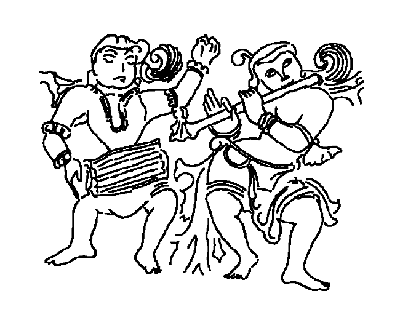CHENNAI: We are aware that the ultimate aim of every composer and musician is to achieve the coalescence, the essential factors of classical music namely bhava, raga and tala. We know bhava literally means, expression, the expression of existence. In a composition, bhava encompasses the aspects rasa, raga 1 and laya and for a musical composition to be meaningful and beautiful, it should be rich in bhava. In short, bhava is that which enables the transmission of experience of thoughts and emotions from the composer to the musician and from the musician to the listeners. We understand that bhava has to be experienced by every individual, in a personal and subjective manner and devotion is the pre-dominating aspect depicted in a musical composition. I am sure it would be of immense value to study the aspects of bhava, expressed by the musical trinity Thyagaraja, Dikshitar and Syama Sastri, who were contemporaries in the 18th century. […]
Source: “Efficacy of Bhava — An Evaluation” by Narayana Vishwanath, The New Indian Express (21st September 2015) >>
More about the above person(s) and topics
Periodicals and sites included | More resources | Disclaimer >>
Learn & practice more
- A brief introduction to Carnatic music (with music examples and interactive map)
- Bhava and Rasa explained by V. Premalatha
- Free “flow” exercises on this website
- Glossary (PDF)
- Introduction (values in the light of modernity)
- Video | Keeping tala with hand gestures: Adi (8 beats) & Misra chapu (7 beats)
- Voice culture and singing
- Why Carnatic Music Matters More Than Ever
- Worldcat.org book and journal search (including Open Access)
- The most concise definition of a raga may be that by Joep Bor: a tonal framework for composition and improvisation. [↩]

